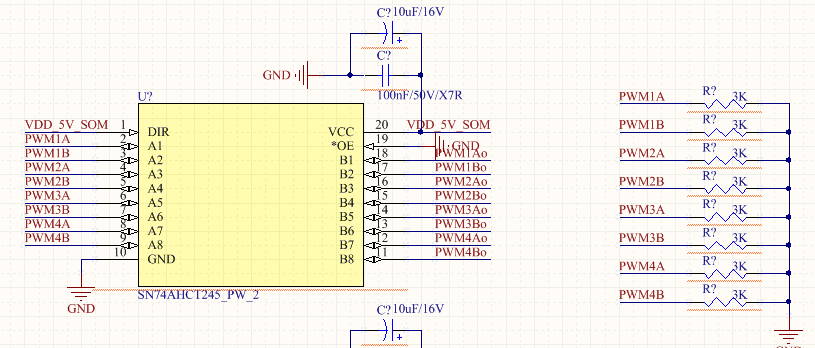Other Parts Discussed in Thread: SN74AHCT245, SN74HCT245
What is the output current of TMS320F28377DZWT as PWM output GPIO port (gpio145-gpio168)?What is the resistance between SN74AHCT245 and PWM back end?What is the resistance between the PWM back end and SN74HCT245?


